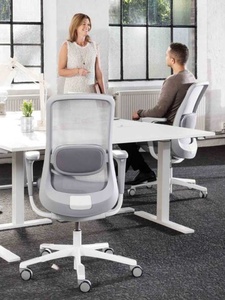Remain productive and avoid RSI with these simple tips for Repetitive Hand and Wrist Tasks
Repetitive strain injury (RSI), covers a variety of injuries and pain caused to muscles, nerves and tendons by repetitive movements and overuse. RSI usually effects the upper body and the most common areas include the forearm, elbow, wrist, neck, hands and shoulders.
Among office based staff RSI of the wrist is relatively common. This form can develop from prolonged typing, working with a mouse or occasionally writing. Repetition of fine hand movements for hours, day after day without sufficient breaks will eventually result in muscle breakdown and tendon inflammation as the body can't recover from the strain. The inflammation, tendon degeneration and damage to muscle fibres can lead to pain, stiffness, weakness and reduced motor control.
Implement these tips to ensure you avoid RSI and remain productive at work.
1. Reduce the number of repetitions per shift.
- Where possible, substitute full or semi-automated systems.
2. Maintain neutral (handshake) wrist positions where possible:
- Design jobs and select tools to reduce extreme flexion or deviation of the wrist.
- Avoid inward and outward rotation of the forearm when the wrist is bent to minimize elbow disorders (i.e., tennis elbow).
3. Design tasks so that a power rather than a finger pinch grip can be used to grasp materials. Note that a pinch grip is five times more stressful than a power grip.
4. Reduce the force or pressure on the wrists and hands:
- Wherever possible, reduce the weight and size of objects that must be handled repeatedly.
- Avoid tools that create pressure on the base of the palm which can obstruct blood flow and nerve function.
- Avoid repeated pounding with the base of the palm.
- Avoid repetitive, forceful pressing with the finger tips.
5. Avoid reaching more than 15 inches in front of the body for materials:
- Avoid reaching above shoulder height, below waist level, or behind the body to minimize shoulder disorders.
- Avoid repetitive work that requires full arm extension (i.e., the elbow held straight and the arm extended).
6. Provide support devices where awkward body postures (elevated hands or elbows and extended arms) must be maintained. Use fixtures to relieve stressful hand/arm positions.
7. Select power tools and equipment with features designed to control or limit vibration transmissions to the hands, or alternatively design work methods to reduce time or need to hold vibrating tools.
8. Provide protection for the hands if working in a cold environment. Furnish a selection of glove sizes and sensitize users to problems of forceful over-gripping when worn.
9. Select and use properly designed hand tools (e.g., grip size of tool handles should accommodate majority of workers).
For more information regarding workplace ergonomics or to arrange a Free Consultation with one of our Ergonomic Consultants at our Dublin City Centre Showroom on Clare Street (Near Merrion Square, opposite the National Art Gallery) get in touch on 01 6110200.
Adapted from design checklists developed by Dave Ridyard, CPE, CIH, CSP. Applied Ergonomics Technology, 270 Mather Road, Jenkintown, PA 19046–3129.
Product that are proven to prevent and relieve Repetitive Strain Injuries: RSI, Carpal Tunnel, Tennis Elbow…















